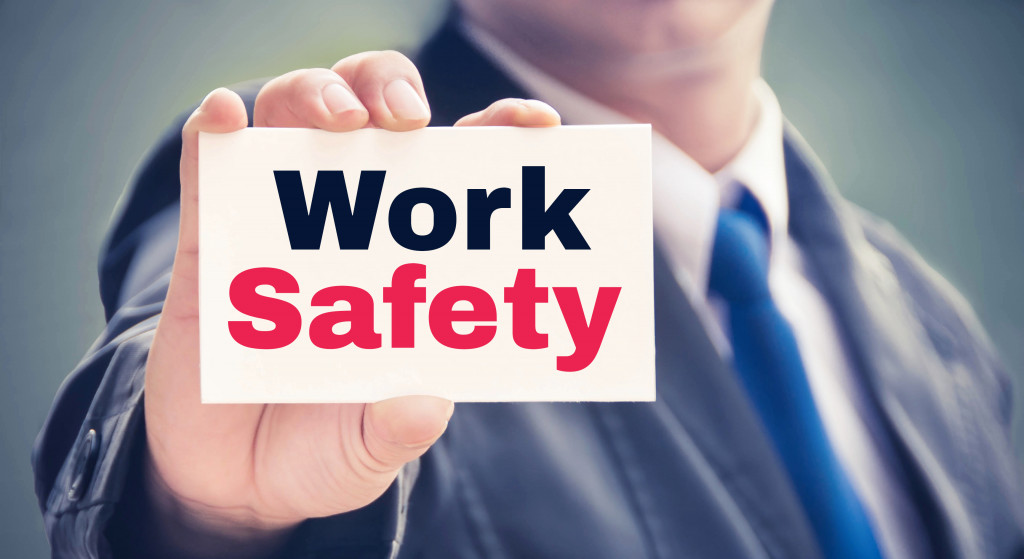• Monitoring employee activity, website usage, email communication, and file access can help employers mitigate risks.
• Advanced security systems, safety interlocks, and wearable safety devices can help ensure safety protocols are followed.
• Investing in firewalls, antivirus software, and encryption technology can bolster cybersecurity measures.
• Technology helps businesses monitor activity, improve safety protocols and strengthen cybersecurity measures to mitigate workplace risks.
The workplace is an ever-changing environment. As new technologies emerge, the ways in which businesses protect their employees and operations become more complex. Fortunately, technology can be a powerful ally in mitigating workplace risks. From monitoring employee activities to improving safety protocols, here’s how tech can help you keep your workplace safe and secure.
Monitoring Employee Activity
Businesses have an obligation to ensure their employees are productive and compliant with company policies. With the right tools in place, employers can monitor employee activities to identify any potential risks or issues early on so that they can address them before they become bigger problems. Here are some types of activity that companies can now detect:
Website Usage
By monitoring employee website usage, businesses can detect any suspicious activity or attempts to access restricted websites. Additionally, they can track how much time employees spend on websites or applications unrelated to their job, as well as any downloads that could pose security risks. This type of monitoring helps employers keep their networks safe and secure while still giving staff the freedom to access the sites they need.
Email Communication
Not only can employers use technology to monitor email communication, but they can also set up protocols to block certain types of emails from reaching their workers. This helps protect employees from receiving potentially harmful or malicious content that could put their privacy or the company’s security at risk. It also allows companies to keep track of any communicative patterns that could indicate a potential issue or risk.
File Access and Sharing
Technology can also help employers manage who has access to specific files and restrict the sharing of confidential documents. By setting up a permission-based system, businesses can ensure that only those with the appropriate credentials have access to sensitive information. This helps protect employee privacy as well as company assets.

Improving Safety Protocols & Equipment
Safety protocols are essential for keeping employees safe while on the job. Meanwhile, the right equipment and technology can help ensure these protocols are correctly followed. Here are some examples that businesses can now leverage:
Security Systems
Advanced security systems are essential to mitigating workplace risks. These systems monitor and control employee activities, helping employers identify issues quickly and take corrective action.
Additionally, they can also protect against unauthorized access and regulate who has access to sensitive files. More advanced systems may even have automated alerts to notify personnel of any suspicious activity or potential threats that need handling.
Safety Interlocks
It might seem unnecessary, but an efficient safety interlock incorporated into various pieces of equipment can help ensure that safety protocols are followed. These devices monitor and control the equipment’s operations, ensuring they do not exceed any predetermined parameters or restrictions.
For example, if a machine is operating at an unsafe speed, the interlock will automatically shut it down and notify the operator. This helps minimize any potential harm to workers and property.
Wearable Safety Devices
Many companies now use wearable safety devices to monitor employee activity and help ensure their safety at all times. For example, some wearables can alert staff if there is a dangerous situation and provide them with the location of the closest emergency exit. Additionally, these devices can also measure environmental factors such as air quality, temperature, or even radiation levels.

Strengthening Cybersecurity Measures
Security breaches have become increasingly common over the past few years due to advancements in technology and malicious actors who capitalize on weaknesses in existing systems. To protect against these threats, businesses must invest in robust cybersecurity measures that include the following:
Firewalls
Firewalls are an essential component of any cybersecurity strategy, as they are designed to protect against malicious actors from gaining unauthorized access to a network. They act as a barrier between the public internet and private networks, allowing only authorized traffic in and out of the network. It is crucial that businesses use firewalls with advanced features such as authentication, encryption, and intrusion detection.
Antivirus Software
Antivirus software can be used to detect and remove any malicious code that may be present on a computer or network. Additionally, they are also helpful in preventing new viruses from entering the system. Investing in up-to-date antivirus software that offers comprehensive protection against all types of threats is important.
Encryption Technology
Encryption is an important tool for keeping data safe and secure. It works by scrambling the data so that only authorized users can access it, making it virtually impossible for anyone outside the company to gain access or use the information in any way.
Technology plays a vital role in mitigating workplace risks because it allows organizations to monitor employee activity more closely, strengthen safety protocols, and bolster cybersecurity measures against malicious actors who seek to exploit weaknesses within existing systems for their own gain. Thanks to these advances in technology, businesses have access to powerful tools that help them keep their workplaces safe and secure so they can focus on growing their operations with confidence.

